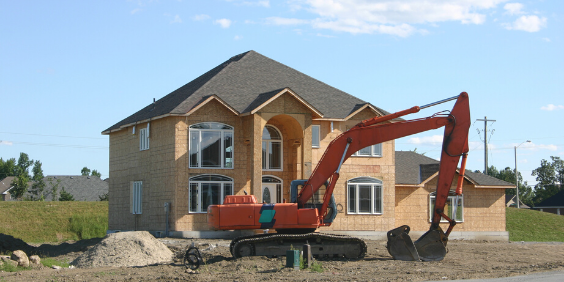A Guide to Municipal Heritage Properties in Saskatchewan

Authors: Milad Alishahi, Haley Stearns, Shawna Sparrow
Saskatchewan municipalities have authority to designate properties as Municipal Heritage Properties pursuant to The Heritage Property Act (the “Act”). Any Saskatchewan municipality may designate local or regional properties as Municipal Heritage Properties or municipal districts as Municipal Heritage Conservation Districts.
The term “heritage property” includes any building, structure or site that is significant for its cultural, historical, architectural, environmental, archaeological, paleontological, scientific or aesthetic value.
Council has the authority to, by bylaw, establish guidelines and controls that the council considers necessary to preserve and develop the heritage characteristics of a designated property, including:
- design elements of existing and proposed building and structures
- street and sidewalk designs
- street furniture, lighting and public signs
- commercial and private signs
- landscaping
To advise and assist council with heritage property matters, council may establish a Municipal Heritage Advisory Committee.
Why would a municipality want to designate a heritage property?
- Designation recognizes the heritage value of a property
- Designation allows a municipality to preserve important sites in the community, and to preserve history
- Municipal Heritage Properties are protected from certain unauthorized changes and unauthorized demolition because the heritage interest is registered on the property’s title
- Municipal Heritage Properties are eligible for grants through the Saskatchewan Heritage Foundation and other funding that may be available on a municipal level
What is the process for designation?
To properly designate a Municipal Heritage Property or a Municipal Heritage Conservation District, the Act sets out several steps that a municipality must follow.
-
Service, Publication and Registration of Notices
Before passing a bylaw, the Act sets out requirements regarding the service, publication and registration of notices, including:
- council must consult with the Municipal Heritage Advisory Committee, if one has been established
- the municipality must serve the registrar and all owners of property included in the proposed bylaw with a notice of intention to designate
- the municipality must publish the notice of intention in at least one newspaper in general circulation in the municipality
- in the case of a bylaw to designate Municipal Heritage Property, the municipality must register an interest based on a notice of intention in the Land Titles Registry against all titles for the parcels of land included in the proposed bylaw
- in the case of a bylaw to designate a Municipal Heritage Conservation District, the municipality must register an interest based on a Heritage Conservation District notice in the Land Titles Registry against all titles for the parcels of land included in the proposed bylaw
At any time during this stage, prior to passing a proposed bylaw, council may withdraw the proposed bylaw. Additionally, there may be objections to a proposed designation that will require consideration. If council chooses to withdraw a proposed bylaw, it must notify the registrar and all owners of the property included in the proposed bylaw of council’s decision and discharge the interest registered.
-
Bylaw to Designate
If council proceeds with passing a bylaw to designate, there are further requirements for when the bylaw must be passed and the content of the bylaw.
Council must vote on a bylaw to designate no less than 30 days from the date of the last service, publication or registration of notices. The bylaw must contain:
- an accurate legal description of all property included in the bylaw
- where the property is within a municipality other than a rural municipality and is to be designated as a Municipal Heritage Property, the civic address
- where the property is within a municipality other than a rural municipality and is to be designated as part of a proposed Municipal Heritage Conservation District, the civic boundaries of that District
- the reasons for the designation
-
After Passing the Bylaw
After council passes the bylaw to designate, it must serve the registrar with a certified copy of the bylaw and serve a notice of designation on all owners of property included in the bylaw. In the case of a bylaw to designate a Municipal Heritage Property, council must register an interest based on the notice of designation in the Land Titles Registry against all titles for the parcels of land included in the bylaw.
What happens if there is an objection to a proposed designation?
Any applicant who objects to the proposed designation of a Municipal Heritage Property or a Municipal Heritage Conservation District must serve the council with an objection stating the reasons for the objection and all relevant facts. The applicant shall serve the objection at least three days prior to the council meeting.
On receipt, council shall refer the matter to the review board for a hearing and a report, and notify the applicant of the referral, or withdraw the proposed bylaw. The review board will hold a public hearing to consider the matter. The council, the applicant, and any other person that the review board may specify are parties to the public hearing and are entitled to notice of the hearing.
The review board will submit a report to council within 30 days of the hearing. Council must consider the report in reaching its decision, and follow additional steps it decides to modify or withdraw the proposed bylaw.
Can a municipality repeal or amend a designation bylaw?
Council may, by bylaw, repeal or amend any bylaw to designate.
Establishing, amending, and repealing Municipal Heritage Property designations is a complex process with many procedural requirements. Municipalities must follow the process provided strictly or risk having decision by council quashed.
For more information or assistance with Municipal Heritage Property designations, please do not hesitate to contact a member of the MLT Aikins municipal team.
Note: This article is of a general nature only and is not exhaustive of all possible legal rights or remedies. In addition, laws may change over time and should be interpreted only in the context of particular circumstances such that these materials are not intended to be relied upon or taken as legal advice or opinion. Readers should consult a legal professional for specific advice in any particular situation.





